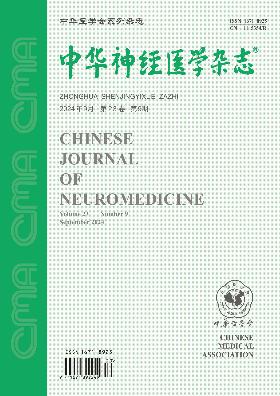混合手术治疗慢性症状性颈内动脉闭塞9例分析
Q4 Medicine
引用次数: 0
摘要
目的探讨混合手术治疗慢性症状性颈内动脉闭塞的可行性和安全性。方法2016年4月至2018年12月,对9例经数字减影血管造影确诊的慢性症状性颈内动脉闭塞患者行颈动脉内膜切除术(CEA)+双腔福格蒂球囊(3F)栓塞术或必要时行支架植入术。回顾性分析这些患者的临床资料。分析围手术期及随访患者血管再通情况及并发症。结果CEA+双腔Fogarty球囊(3F)取栓5例;福格蒂球囊取栓术后4例行支架置入术。9例患者术中颈内动脉均即刻通畅。术后出现高灌注综合征3例;严格控制血压,适当脱水后症状逐渐缓解。无脑出血、脑梗死、神经损伤等严重并发症发生。随访时间4 ~ 36个月;没有患者发生新的中风或死亡;未出现再咬合;但发现1例轻度再狭窄(50%)。1例患者术后6个月发生TIA发作。结论混合手术是治疗慢性症状性颈内动脉闭塞的有效方法;然而,术前评估和选择患者应谨慎;应该制定个性化的治疗方案。关键词:颈内动脉闭塞;杂交手术;动脉内膜切除术;福格蒂导管栓子切除术;颈动脉支架术本文章由计算机程序翻译,如有差异,请以英文原文为准。
Hybrid surgery for chronic symptomatic occlusion of the internal carotid artery: an analysis of 9 cases
Objective
To investigate the feasibility and safety of hybrid surgery in treatment of chronic symptomatic internal carotid artery occlusion.
Methods
From April 2016 to December 2018, 9 patients with chronic symptomatic internal carotid artery occlusion confirmed by digital subtraction angiography were treated with carotid endarterectomy (CEA)+ double chamber Fogarty balloon (3F) embolectomy or stent implantation when necessary. The clinical data of these patients were retrospectively analyzed. Vascular recanalization and complications during perioperative period and follow-up of the patients were analyzed.
Results
CEA+double chamber Fogarty balloon (3F) thrombectomy was performed in 5 patients; and stent placement was performed in 4 patients after Fogarty balloon thrombectomy. The internal carotid arteries of all 9 patients were unobstructed immediately during the operation. Postoperative hyperperfusion syndrome occurred in 3 patients; blood pressure was strictly controlled and the symptoms gradually relieved after proper dehydration. No serious complications such as cerebral hemorrhage, cerebral infarction, or nerve injury occurred. The duration of follow-up was 4-36 months; no patient developed a new stroke or death; no re-occlusion appeared; but one mild restenosis (50%) was detected. one patient suffered from a TIA attack 6 months after operation.
Conclusion
Hybrid surgery is an effective method for treatment of chronic symptomatic internal carotid artery occlusion; however, preoperative evaluation and selection of patients should be carefully; individualized treatment plans should be developed.
Key words:
Internal carotid artery occlusion; Hybrid surgery; Endarterectomy; Fogarty catheter embolectomy; Carotid artery stenting
求助全文
通过发布文献求助,成功后即可免费获取论文全文。
去求助
来源期刊

中华神经医学杂志
Psychology-Neuropsychology and Physiological Psychology
CiteScore
0.30
自引率
0.00%
发文量
6272
期刊介绍:
 求助内容:
求助内容: 应助结果提醒方式:
应助结果提醒方式:


